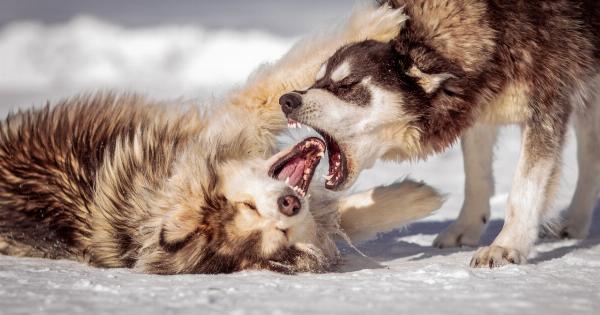Dogs are generally known for their loyalty, companionship, and love. They are often referred to as man’s best friend, and for good reason.
However, there are instances when a dog may display aggressive behavior, leaving both the owner and others around them puzzled and concerned. Aggression in dogs can manifest in various forms, such as growling, biting, snapping, or lunging. To effectively address this issue, it is crucial to identify the underlying triggers that may lead to a dog’s aggressive behavior.
1. Lack of Proper Socialization
One of the primary factors that can trigger aggression in dogs is a lack of appropriate socialization during their crucial developmental stages. It is vital for a dog to be exposed to different people, animals, and environments from a young age.
Proper socialization allows dogs to build positive associations and develop confidence in various situations. Without this exposure, they may feel threatened or fearful, leading to aggressive reactions.
2. Fear and Anxiety
Dogs may become aggressive when they feel afraid or anxious. Fear-based aggression often occurs as a response to a perceived threat or to protect themselves from a perceived danger.
It could be triggered by loud noises, unfamiliar people or animals, or traumatic experiences. When a dog feels threatened, their instinctual response may be to display aggression to protect themselves or their territory.
3. Lack of Training and Discipline
Another common trigger for dog aggression is a lack of proper training and discipline. Dogs need guidance and clear boundaries to understand what is expected of them.
When they lack proper training, they may become confused about their role within the household or community. This confusion can lead to frustration, which might manifest as aggression in certain situations.
4. Possessiveness and Resource Guarding
Some dogs may display aggression when it comes to their possessions, including food, toys, or even their territory. This possessiveness can stem from a natural instinct to protect their resources.
Dogs that have not been taught to share or have had negative experiences involving resource guarding may become aggressive when someone or another animal approaches their valued possessions.
5. Medical Issues and Pain
Undiagnosed or untreated medical issues can significantly impact a dog’s behavior. Dogs may exhibit aggression as a result of pain or discomfort.
Imagine if you had an undiagnosed condition causing you constant pain or discomfort – it would likely affect your mood and reactions towards others. Similarly, dogs in pain may become more irritable and prone to displaying aggressive behavior.
6. Genetic Predisposition
Genetics play a role in shaping a dog’s temperament and behavior. Certain breeds have been selectively bred for specific traits, including aggression.
While genetics cannot solely explain a dog’s aggression, it can contribute to their predisposition towards displaying aggressive behaviors. Understanding a breed’s tendencies can help identify potential triggers and tailor appropriate training and management techniques.
7. Past Traumatic Experiences
Dogs, like humans, can be deeply affected by past traumatic experiences. Dogs that have been abused, neglected, or involved in traumatic incidents may develop defensive or aggressive behaviors as a coping mechanism.
It is essential to approach such dogs with patience, understanding, and positive reinforcement to help them overcome their past and build trust.
8. Lack of Exercise and Mental Stimulation
A well-exercised and mentally stimulated dog is generally happier and less prone to aggressive behavior. Dogs that do not receive adequate physical exercise and mental stimulation may accumulate pent-up energy and frustration.
This excess energy can manifest as aggression towards other animals, people, or objects. Regular exercise and providing appropriate mental stimulation can help prevent such behavior.
9. Protective Instincts
Dogs are naturally protective of their families and territories. This protective instinct can sometimes lead to aggressive behavior. While being protective is a desirable quality, excessive aggression can become problematic.
It is crucial to teach dogs appropriate boundaries and reinforce positive social interactions to avoid any unwarranted aggression.
10. Improper Handling and Training Techniques
The way a dog is handled and trained can greatly impact their behavior. Harsh handling, punishment-based training methods, or inconsistent training can lead to fear, anxiety, and aggression in dogs.
Positive reinforcement training techniques that focus on rewarding desired behaviors, along with patience and consistency, are more effective in nurturing a well-behaved and non-aggressive dog.
Conclusion
Understanding what triggers a dog’s aggression is the first step in effectively addressing and managing this behavior.
It is crucial to approach the issue with empathy, patience, and a commitment to providing the necessary training, socialization, and care that a dog requires. Seeking professional help from a qualified dog behaviorist or trainer is advisable if the aggression persists or escalates despite your best efforts.





























